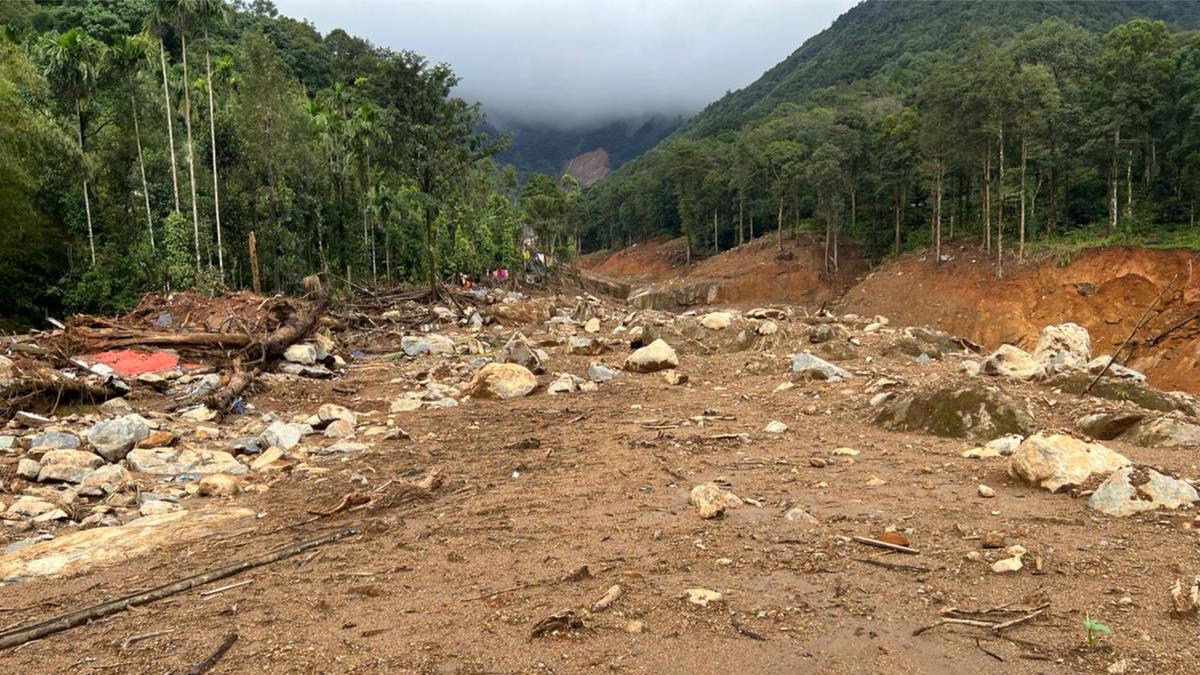
Understanding debris flow behaviour during landslides may help prevent future destruction: study
The Hindu
Study on landslides in Wayanad highlights need for improved disaster management strategies in vulnerable areas using advanced modelling.
A recent study on the devastating landslides in Wayanad in July 2024 has highlighted the need for improved disaster management strategies to mitigate risks in vulnerable areas.
The research focusses on understanding the behaviour of rapid debris flows that can cause widespread destruction to communities living in steep, mountainous regions.
The collaborative study, involving the University of Kerala; the Indian Institute of Science Education and Research, Mohali; the University of Mississippi; British Geological Survey; and the T.K.M. College of Engineering, tracks the path of the debris flow using advanced run-out modelling. It reveals important findings about the speed, pressure and material accumulation of such natural disasters.
By mapping areas of intense dynamic activity using crowd-sourced data and Rapid Mass Movement Simulation (RAMMS), the study identifies regions most at risk of damage. Post-event images validate these findings, confirming significant deposition of debris at lower elevations, which could lead to future hazards downstream.
Experts say these insights are essential for developing more effective disaster prevention strategies. Sajin Kumar K.S, co-author of the study and Assistant Professor of Geology at the University of Kerala, explains that by creating detailed vulnerability maps, including run-out paths, which indicate where debris flows could travel, could provide valuable guidance for future planning and mitigation efforts. He emphasises that avoiding development in these high-risk zones could greatly reduce the potential for destruction and loss of lives.
The study also highlights a concerning trend—the path of the massive debris flow that devastated Punchirimattom, Mundakkai, and Chooralmala villages in 2024 closely mirrored the path of the landslide in July 1984, which killed 14 people, and a smaller event in 2019.
In addition, the research stresses the importance of early warning systems. By installing rainfall and soil moisture monitoring stations, authorities can set thresholds to alert communities about imminent debris flow events. Early warning could save lives and help authorities take prompt action, including evacuation and other safety measures.

“Earth Day celebrations have already started in Bengaluru, with campaigns at various colleges such as St. Josephs, and Christ University where life-size elephants made from the invasive species, Lantana Camera, have been travelling to spread the message of conservation and coexistence, along with expert talks from WWF India and Ravi Chellam of Metastring Foundation,” said the release.

Vijayawada and Vizag metro rails: Centre approves appointment of SYSTRA MVA Consulting for preparing mobility plans. The New Delhi-based consultant has emerged as the successful bidder for preparing CMPs for both the projects. The Government of Andhra Pradesh has sanctioned DPRs for construction of the Visakhapatnam Metro Rail for a length of 46.23 km in three corridors at an estimated cost of ₹11,498 crore and the Vijayawada Metro Rail for a length of 38.40 km in two corridors at a cost of ₹11,009 crore.











